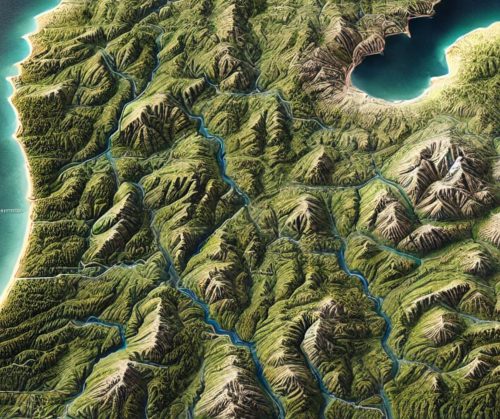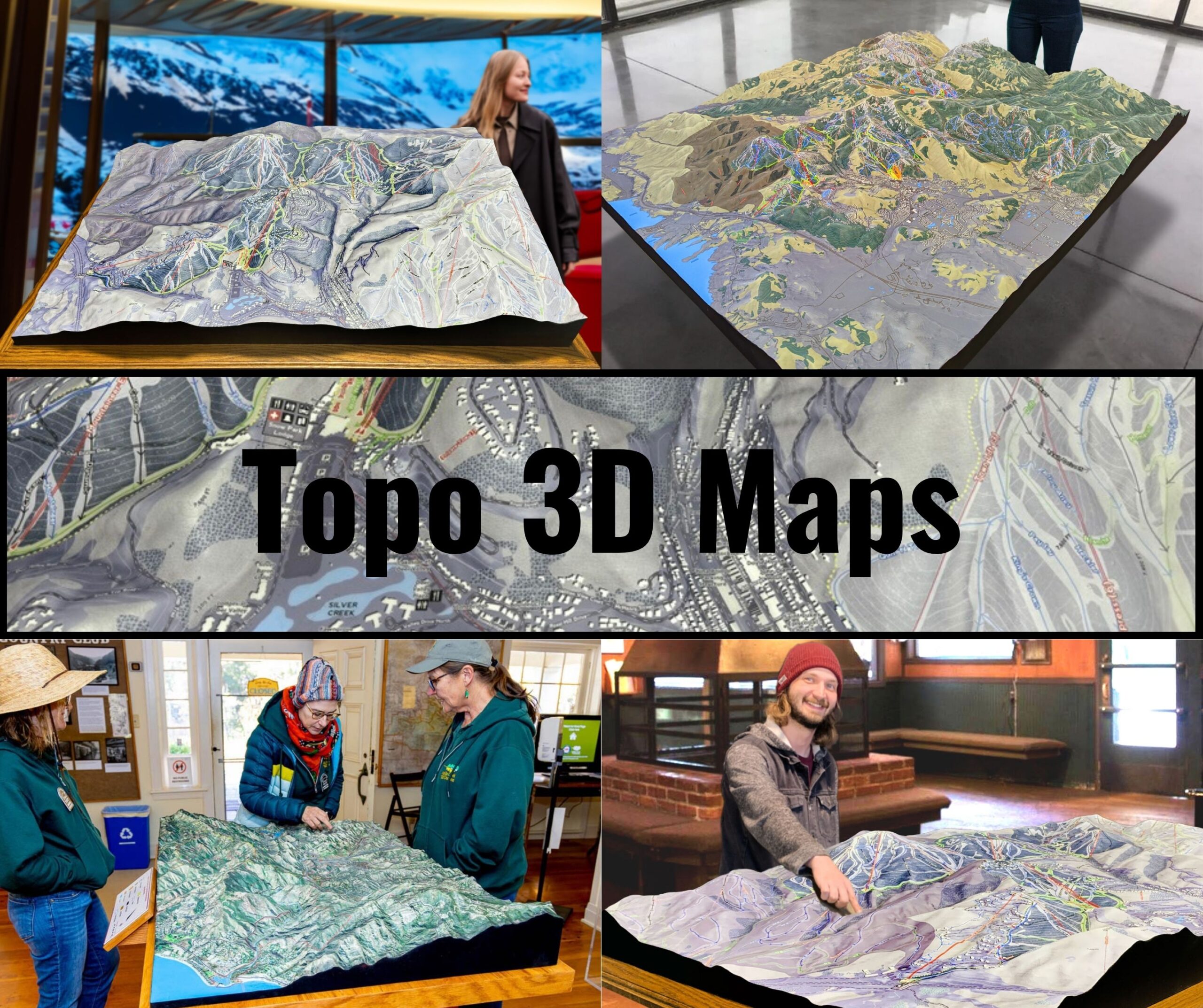Michigan Topo Map
Michigan Topo Map
We Build Custom 3D Topo Maps
Michigan Topo Maps: Exploring the Great Lakes State’s Remarkable Geography
Michigan, a state defined by its Great Lakes shorelines and peninsular geography, offers some of the most unique and diverse landscapes in the United States. From the sand dunes along Lake Michigan to the rugged terrain of the Upper Peninsula, Michigan’s natural features are both varied and breathtaking. Topographic maps are essential for exploring and understanding these terrains, providing intricate details of elevations, waterways, and landforms.
Michigan’s topographic maps, available in both 2D and 3D, are indispensable for adventurers, conservationists, educators, and geologists. They reveal the state’s rich geographical diversity, offering a window into its peaks, valleys, and aquatic ecosystems.
The Upper Peninsula: Rugged Terrain and Pristine Wilderness
Michigan’s Upper Peninsula, often referred to as the “U.P.,” is a rugged, forested region rich in natural beauty and outdoor adventure opportunities. This area is home to the Porcupine Mountains, the Keweenaw Peninsula, and Tahquamenon Falls State Park, among other iconic locations.
In 2D topographic maps, the Upper Peninsula is represented with tightly packed contour lines that illustrate its dramatic elevation changes, rocky ridges, and vast forests. Features such as Lake Superior’s coastline, the Huron Mountains, and the region’s many waterfalls are prominently displayed, providing essential details for explorers and conservationists.
3D topographic maps bring the U.P. to life, showcasing the height of its ridges, the depth of its valleys, and the expansive shorelines of its Great Lakes borders. These maps are invaluable for hikers, geologists, and nature enthusiasts seeking to navigate and appreciate the rugged charm of Michigan’s northernmost region.
The Lower Peninsula: Rolling Hills, Sand Dunes, and Lakeshores
Michigan’s Lower Peninsula, shaped like a mitten, is characterized by rolling hills, expansive farmlands, and an abundance of inland lakes. The western shoreline, with its towering sand dunes and scenic beaches along Lake Michigan, is particularly noteworthy.
In 2D topographic maps, the Lower Peninsula is depicted with gently curving contour lines that reflect its rolling terrain and lake-dotted landscapes. Features such as Sleeping Bear Dunes National Lakeshore, Traverse City’s hills, and the winding Au Sable River are clearly marked, offering a detailed view of the region’s geography.
3D topographic maps of the Lower Peninsula highlight the interplay of its dunes, hills, and waterways, showcasing the natural beauty of areas like the Manistee National Forest and the Kalamazoo River. These maps are essential for outdoor enthusiasts and planners seeking to explore and preserve this dynamic region.
The Great Lakes Shorelines: Mapping Michigan’s Aquatic Borders
Michigan’s identity is deeply tied to the Great Lakes, which provide over 3,200 miles of shoreline and define its geography and economy. The state is bordered by four of the five Great Lakes: Superior, Michigan, Huron, and Erie.
In 2D topographic maps, Michigan’s Great Lakes shorelines are represented with contour lines that detail the coastal features, including sand dunes, cliffs, and bays. Notable landmarks such as Mackinac Island, Pictured Rocks National Lakeshore, and Point Pelee are prominently displayed, offering insights into the region’s hydrology and land use.
3D topographic maps provide a more immersive view of Michigan’s shorelines, emphasizing the height of coastal bluffs, the undulating patterns of dunes, and the depths of nearshore waters. For boaters, marine biologists, and conservationists, these maps are essential for understanding and navigating Michigan’s extensive aquatic ecosystems.
Michigan’s River Systems: Lifelines Across the State
Michigan’s rivers, including the Grand, Muskegon, and Escanaba, play a vital role in shaping its landscapes and supporting its ecosystems. These waterways create fertile floodplains, scenic valleys, and dynamic recreational opportunities.
In 2D topographic maps, Michigan’s rivers are depicted with contour lines that illustrate their meandering paths and the elevation changes of their banks and valleys. Features such as dams, rapids, and tributaries are clearly marked, offering valuable information for navigation and water resource management.
3D topographic maps enhance the understanding of Michigan’s river systems by emphasizing the depth of their channels, the height of surrounding bluffs, and the expanse of their floodplains. These maps are invaluable for paddlers, ecologists, and land-use planners working to balance recreation and conservation.
Michigan’s Islands: Charting Unique and Isolated Landscapes
Michigan is home to many islands, including Isle Royale in Lake Superior and the Beaver Island archipelago in Lake Michigan. These islands, often remote and rugged, provide unique ecosystems and recreational opportunities.
In 2D topographic maps, Michigan’s islands are depicted with contour lines that illustrate their elevations, shorelines, and surrounding waters. Features such as trails, harbors, and lighthouses are prominently displayed, offering a detailed view of these isolated landscapes.
3D topographic maps bring Michigan’s islands to life, showcasing the elevation of their ridges, the contours of their coastlines, and the depth of surrounding waters. These maps are essential for adventurers and conservationists exploring these unique parts of Michigan.
How Michigan Topo Maps Are Fabricated: Crafting 2D and 3D Masterpieces
Creating topographic maps of Michigan involves advanced technology, precise data collection, and skilled craftsmanship. From the dunes of Lake Michigan’s shoreline to the peaks of the Porcupine Mountains, Michigan’s diverse terrain requires detailed and accurate representation.
For 2D topographic maps, the process begins with data collection from sources such as satellite imagery, aerial surveys, and LiDAR (Light Detection and Ranging). This data is processed using Geographic Information Systems (GIS) software to create contour lines that represent changes in elevation. In Michigan, special attention is given to capturing the dynamic features of its Great Lakes coastlines, the rugged terrain of the Upper Peninsula, and the rolling hills of the Lower Peninsula. Additional features such as trails, roads, and urban areas are added to create a comprehensive map.
Creating 3D topographic maps involves rendering elevation data into three-dimensional models. Advanced software translates the data into digital 3D representations, which can then be printed using 3D printers or displayed digitally for interactive exploration. For Michigan, particular care is taken to highlight features such as the dunes of Sleeping Bear, the islands of Isle Royale, and the intricate patterns of the state’s river systems.
Once the 3D maps are created, they are often painted and finished to enhance their visual appeal and highlight key features such as elevation changes, vegetation, and water bodies. These maps provide a tactile and immersive way to explore Michigan’s landscapes, making them invaluable for educators, researchers, and outdoor enthusiasts.
Michigan Topo Maps for Conservation, Recreation, and Education
Topographic maps play a vital role in conserving Michigan’s natural resources, supporting outdoor recreation, and educating people about the state’s geography. With its vast ecosystems and economic reliance on the Great Lakes, Michigan requires careful management to preserve its environment and heritage.
Conservationists use topographic maps to monitor changes in Michigan’s environment, plan restoration projects, and protect critical habitats. For example, along the Great Lakes shores, these maps guide efforts to combat erosion, restore wetlands, and adapt to rising water levels. In the Upper Peninsula, topographic maps help manage forest health and maintain wildlife corridors.
For adventurers, topographic maps are essential tools for exploring Michigan’s trails, parks, and waterways. Hikers rely on these maps to navigate the trails of Isle Royale or the Porcupine Mountains, while paddlers use them to plan routes along the Au Sable or Muskegon Rivers.
Conclusion: Michigan’s Landscapes Through the Lens of Topographic Maps
Michigan’s topographic maps reveal the state’s diverse and captivating landscapes in stunning detail. From the rugged Upper Peninsula to the rolling hills of the Lower Peninsula, the expansive Great Lakes shorelines, and the remote islands, these maps capture the beauty and complexity of the Great Lakes State.
Whether you’re an adventurer exploring Michigan’s natural wonders, a scientist studying its ecosystems, or an educator teaching geography, topographic maps provide an invaluable tool for understanding and appreciating the state’s terrain. With both 2D and 3D options available, these maps ensure that future generations can continue to explore, protect, and enjoy the landscapes that make Michigan unique.
Check out WhiteClouds’ 3D Maps for more information on Michigan topo maps.

